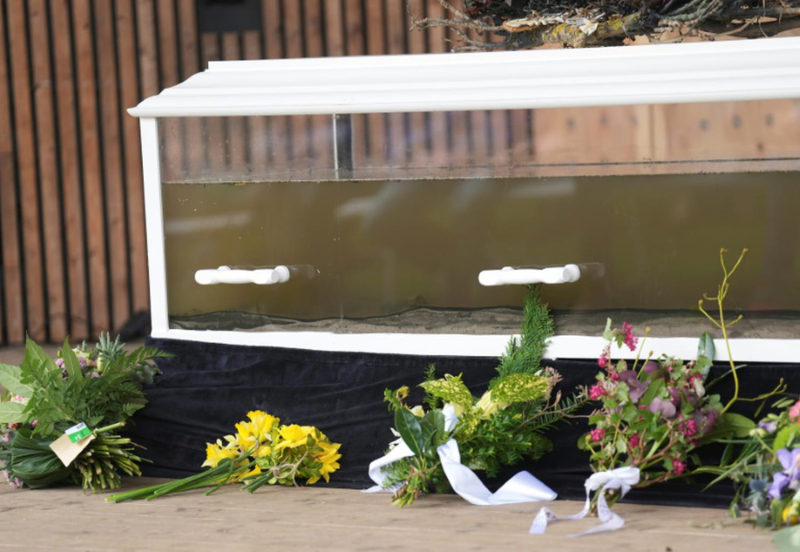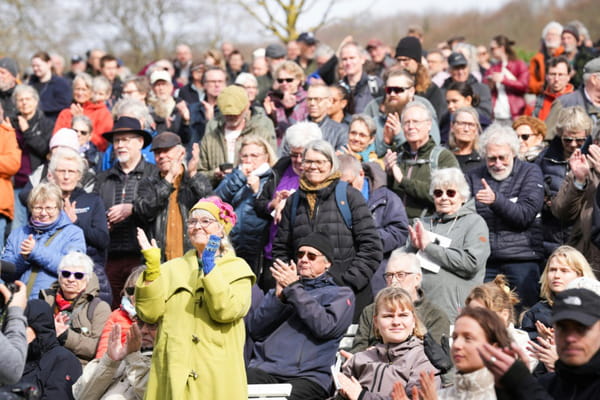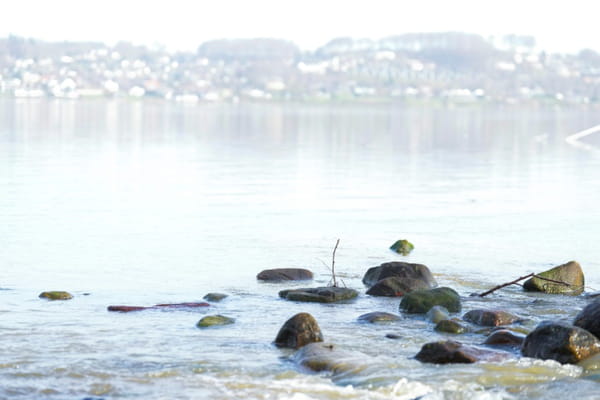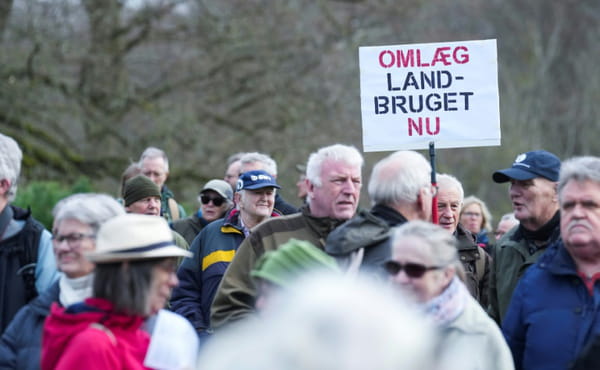More than a thousand people gathered on Saturday at the water's edge of the town. Vejle, in western Denmark, to celebrate the "funeral" of a fjord, whose ecosystem has been asphyxiated by human activities, particularly agricultural waste. “It's a painful event. Last year, Denmark experienced the greatest deoxygenation (of water) in 25 years,” Christian Fromberg, in charge of the demonstration at Greenpeace, which organized it. The equivalent of 7,500 km2, or 17% of the surface area of metropolitan Denmark, is affected by the problem, according to Danish Environment Agency. Without oxygen, marine fauna and flora disappear. Participants in the “funeral” of a fjord, whose ecosystem has been asphyxiated by human activities, on March 6, 2024 in Vejle, Denmark © Ritzau Scanpix – Claus Fisker “About thirty years ago, we could catch them like that (fish). And now, it's over, there's nothing left, the bottom is totally polluted, there's nothing left of life”, summarizes Hugues Dedieu, a resident of Vejle. For biologist Stiig Markager, from the University of Aarhus, we can speak of “death of the fjord” because “the main components of the ecosystem have reached such a low level that they no longer fulfill their role”. Goodbye eelgrass, mussels and eels: an underwater surveillance camera installed by the town hall only detected one fish in 70 hours of operation. View of the fjord for which a “funeral” was symbolically celebrated to denounce its asphyxiation by human activities, on March 6, 2024 in Vejle, in western Denmark © Ritzau Scanpix – Claus Fisker In 2022, a report from the University of Southern Denmark already noted the “poor environmental state” of this 22 km long fjord, due to the high presence of nitrogen from fertilizers. the majority of which comes from diffuse runoff from cultivated areas”. – Guilty agriculture – ” The culprits are pigs and cattle,” said Mr. Markager, who supported the Greenpeace initiative. In Denmark, “around 33 million pigs are produced each year and 64% of the land is cultivated”, he notes. The farmers' association ensures that it spares no effort to optimize its practices. “Danish farmers are constantly striving to reduce the quantities of nitrogen, which has allowed the discharge to be halved since 1990,” Marie Østergaard, a “Water and nature” manager at the association, told AFP. “The focus now is on removing poor soils to recreate wetlands, which naturally remove nitrates from the water. This takes time” , she assures. Discarded into the water, the fertilizers serve as food for algae which then multiply on the surface and prevent the penetration of light into the water, necessary for the release of oxygen: deep waters then suffer a depletion of oxygen, aggravated by warming. During the ceremony, tributes to the fjord, to its place in local life, alternate with musical interludes, in front of a crowd with serious faces. Participants in the “funeral” of a fjord, whose ecosystem has been asphyxiated by human activities, on March 6, 2024 in Vejle, western Denmark © Ritzau Scanpix – Claus Fisker Some people evoke the first fishing, or the first kisses on the fjord, others the symbolism of this “burial” of nature. The pastor, Sarah Kragh Dedieu, concluded the event with a prayer of hope after a reading from the Bible on the creation of the sea and the earth. “As a priest, I thought I could bring hope into despair,” she said. “It was at the both heartbreaking and comforting”, judges a participant, Mette Hedegaard, who came with her paddle board. Only five of the 109 Danish coastal areas are classified in “good ecological status” by the Environment Agency. “Denmark is very probably the EU Member State whose marine waters are in the worst ecological state”, laments Mr Markager. And its geography is an aggravating condition. The “numerous closed estuaries and low salinity (…) lead to “stratification of the water column and makes it more vulnerable to eutrophication,” he explains. According to the Danish Climate Council, Denmark does not meet its climate objectives. It is notably far from being able to ensure a 70% reduction in its emissions by 2030. For the academic, “the nitrogen loads coming from Danish agriculture must be reduced by 45% within three years in order to comply with the EU Water Framework Directive.” All rights of reproduction and representation reserved. © (2024) Agence France-Presse



